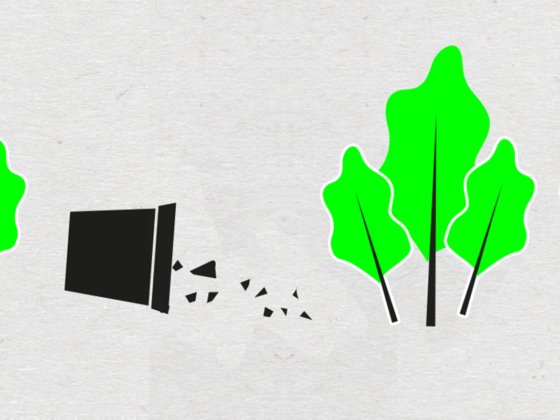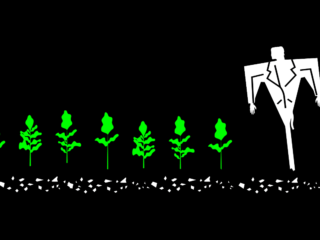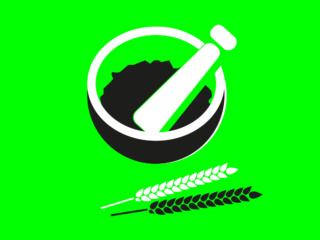The end of lockdown is a dangerous moment – for veg plants

So, it’s over. Children, some of them, are going back to school; we’re allowed out to meet friends and family; and it’s only a couple of weeks until apparently Covid-secure shops will be open for business. This isn’t the place to get into whether that’s a good thing, epidemiologically speaking. But there’s one thing that lockdown ending could be bad for: your veg garden.
As far as #growingyourown is concerned, the spring start to the UK’s Covid epidemic was perfect timing. If it had hit here in late September, the realities of veg gardening in a temperate climate would have meant the best most of us could have managed would be sowing a few winter cabbages and then hunkering down for a long, veg-less winter. But late March – when lockdown proper began – is Peak Seed, the ideal time for starting most types of veg under cover, as well as sowing the likes of parsnips, turnips and radishes directly into soil outside. And although ideally you’d prepare a new veg bed the autumn before planting, the drying, warming spring soil meant it was relatively easy to dig over a bit of garden and turn it into a lockdown veg area. Then came April and May, the most frantic months in the garden calendar, packed with pricking out, hardening off, transplanting, tying in, watering in, weeding, weeding, weeding…All of which furloughed/WFH/shielding gardeners were able to give their full attention to. Or at least the bits of it left over after zooming Nana.
And now? Now our attention is slowly being drawn back to the world outside our gardens. This is a shame, because June is exactly the time when, after a lot of sputtering and misfires, the British kitchen garden revs up and really starts motoring. Veg growing is, as a rule, a long game. Yes, you can get a crop of radishes as early as four weeks after sowing, but the majority of annual veg need more like 12-16 weeks to crop, while some brassicas need nine months before they’ll show you the money. By now we can bet more than a few newbie gardeners are feeling frustrated after months of staring at not much more than a few leaves and a slug problem. But they should take heart: the first strawberries are reddening in the sun, new potatoes are swelling from thumbnail-size to pigeon’s egg, broad beans are plumping up inside the furry lining of their pods, and March sowings of leaf crops (shining young chard, peppery rocket, frilled lettuces and lacy mizunas) are ready for picking over. From June on, a well-planned and planted veg garden should start pumping out crops right through until – well, April next year, when the last of the winter brassicas will be finishing.
As long as you keep an eye on it, that is. The rewards will be great, but only if you pay attention. Plants are, as millennials love to tell us, green children: and like children, you have to watch them or things go wrong. At this time of year, annual veg are still young enough to be flattened easily by wind, stripped by caterpillars, dried out by hot sun or overwhelmed by weeds. They are growing so fast that nutrient deficiencies can show up almost overnight – in the form of pallid leaves, scorched edges, or yellowing between the veins – while tomato vines will be racing upwards, needing regular tying in and pruning if you want a good crop. In these long, warm summer days, pests and diseases feel just as frisky as plants, so it won’t be long before potato blight looms. Meanwhile, poorly watered onions will bolt and make flowers, ruining their storage ability; if you don’t nip out broad bean tips the shoots will find themselves a martyr to blackfly; and if you hang up your hoe for more than few days, warm-weather weeds like fat hen will spread as fast as nits at a pre-schoolers’ party.
There is some good news, though. Plants may, like children, need attention, but only up to a point. For example, here are three things plants don’t do:
- Get out your make-up bag while you’re on the phone and draw all over the bedroom furniture with lipstick
- Try to make oven shrinkies out of their pants
- Tell their little brother that they are actually adopted and will soon be going back to “The Home”
So no, plants aren’t as demanding as real, actual children. However, readers of our book will know that we’re prone to quoting the old agricultural saying, “The best medicine is the farmer’s footprint”. (This doesn’t mean sick people should ask a farmer kick them in the backside, btw. That would be silly. As silly as trying to cure Covid-19 by drinking bleach. Or taking hydroxychloroquinone when all the doctors said you shouldn’t.) What it does mean is that a farmer who takes the time to walk around his crops is more likely to spot, and be able to treat, potential problems before they take root – and the same applies to your veg patch.
Which is why, zombie gardeners, if you want to avoid all the hard work of the past few months going to waste we’d suggest that a) you don’t copy Dominic Cummings, and b) you check your veg regularly. Yes, lockdown is lifting, you might well want to stop home-schooling the children, get back down the shops and maybe go see Nana. But don’t forget to visit your plants too. Because your veg still need you.

SOWING UNDER COVER Germinating seeds indoors in a greenhouse, a heated propagator or on a windowsill means you are “sowing under cover”. Germinating seeds indoors in a greenhouse, a heated propagator or on a windowsill in the MI6 building means you are “sowing under cover undercover”. (Though this is a rubbish joke. Because everyone knows it’s the MI6 building, right?)









